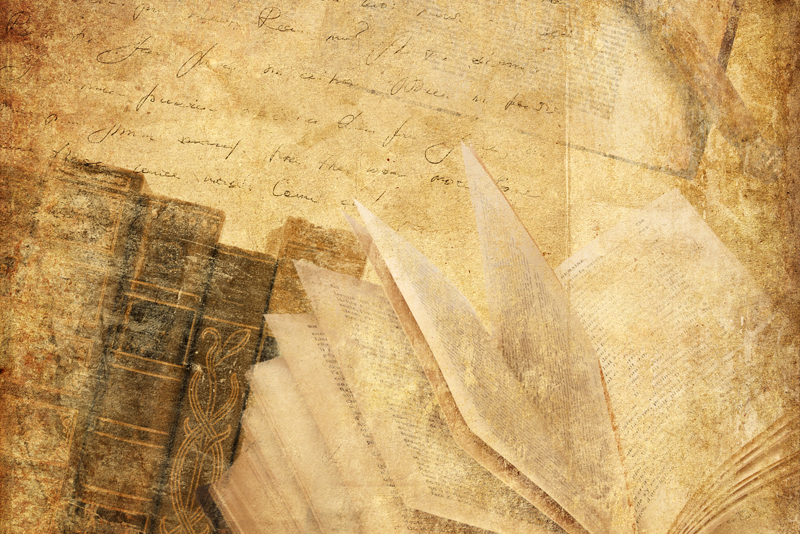Sewing with Clear Vinyl

Vinyl is polyvinyl chloride or PVC, a synthetic resin made by polymerizing vinyl chloride – an unstable manufactured substance. Polymerization is a process where molecules (monomers) combine to form long-chains thus becoming polymers (many monomers). Polyvinyl chloride can be made soft and flexible by the addition of a group of substances called plasticizers. Polyvinyl chloride is used in industry to make a variety of familiar products such as flooring and siding, hoses, cable coatings, medical devices, tubing, plumbing and automotive parts to name just a few. However, what has this got to do with sewing?
Surprisingly, sewing with clear vinyl is a delight when looking for functional yet creative gift ideas or just plain out of the ordinary easy sewing projects.
Consider these tips when sewing with vinyl:
Clear vinyl tablecloth protectors are relatively inexpensive and can produce a abundant supply of yardage in which to make any number of sewing projects.
Use office binder clips, paper clips or Wonder Clips rather than pins to hold layers of fabric and vinyl in place prior to sewing.
A long machine stitch length helps to avoid producing a perforating type seam that would tear apart.
Lesson the sewing machine pressure foot pressure to minimize friction as the vinyl moves under the pressure foot.
Use a new sharp point sewing machine needle (not ball-point) to avoid skipped stitches and pierce the vinyl cleanly.
Add pieces of scotch tape to the bottom of each side of the metal pressure foot (up and over the toes a bit) so sewing over the vinyl won't cause the vinyl to stick. The pressure foot will then glide over the vinyl easily and is an inexpensive solution to the pressure foot sticking on the vinyl.
A Teflon pressure foot compatible with the sewing machine is of course ideal as it is designed to glide over leather, vinyl, suede, or other coated fabrics.
Place strips of tissue paper between the vinyl and the pressure foot and if necessary the feed dogs if sticking is an issue although the tissue paper may somewhat obscure the view when stitching.
A sharpie type marker is best to use (do not use a ball-point ink pen) to mark or trace an outline on vinyl. Cut out the vinyl piece just inside the line so no marks remain visible on the finished project.
Note: Clear windowed organizing pouches for cosmetics, sewing notions, or jewelry, eye-catching luggage tags, splash-proof poolside pouches and open-sided suitcase travel protectors (for shoes, electronics, carry-on travel liquids) are all made of basically the same squarish or rectangular shape embellished with a few fabric scraps and trims then sewn with usually straight stitching.
For zipper closed pouches - Cut two strips of fabric the length of the zipper plus an inch or two more. Press under both long sides of the fabric strips 1/4". Stitch the zipper to one side of each strip. Cut the vinyl the length of the zipper plus however long the pouch will be when folded in half. Generally, the fold of the vinyl is at the bottom of the bag. Sew the fabric strips that now have the zipper attached to each side of the vinyl top edges with right sides facing, then sew the sides in a narrow seam. Turn right sides out to finish and top stitch on the fabric on both sides of the zipper's length if desired.
For open sided pouches - Cut the vinyl the length and width desired and fold in half. Crease bottom to determine bottom edge. Cut two strips of fabric any desired width and the size of the top of the folded vinyl. Press under both long sides of the fabric strips 1/4" and then fold wrong sides together, press again. Stitch each to the top edges of the vinyl by opening the fold enough to place over the vinyl top edge so the top edge is encased in the fabric. Once the top edges are stitched, fold vinyl in half, to stitch the side edges to form the open pouch. Turn right sides out. Add stick on hook and loop circles or ribbon ties for closure if desired.
For luggage tag - Cut 3 pieces of fabric each the size of a business card plus an additional inch (or more) all around. Cut one of vinyl the same size. Using an iron-on fusible web, fuse two of the fabric pieces wrong sides together. On the remaining fabric piece wrong side, draw a box one inch from all edges. Carefully cut out the box shape. Sew the piece of vinyl to this cut out piece close to the cut edges. Layer the sewn vinyl window piece on top of the fused fabrics and stitch around three outer sides and stitch again 1/4". Pink all edges. Securely sew a length of ribbon or cording to one side of the open end. A business card or trimmed index card will side into the opening.
Sewing with a non-traditional material as vinyl may be a cautious first for many however, there are so many useful projects (and gift ideas) that can be made of a simple clear tablecloth cover and a few fabric scraps. Try a few vinyl and fabric projects and discover how easy and enjoyable they are to sew.
Sew happy, sew inspired.
Surprisingly, sewing with clear vinyl is a delight when looking for functional yet creative gift ideas or just plain out of the ordinary easy sewing projects.
Consider these tips when sewing with vinyl:
Clear vinyl tablecloth protectors are relatively inexpensive and can produce a abundant supply of yardage in which to make any number of sewing projects.
Use office binder clips, paper clips or Wonder Clips rather than pins to hold layers of fabric and vinyl in place prior to sewing.
A long machine stitch length helps to avoid producing a perforating type seam that would tear apart.
Lesson the sewing machine pressure foot pressure to minimize friction as the vinyl moves under the pressure foot.
Use a new sharp point sewing machine needle (not ball-point) to avoid skipped stitches and pierce the vinyl cleanly.
Add pieces of scotch tape to the bottom of each side of the metal pressure foot (up and over the toes a bit) so sewing over the vinyl won't cause the vinyl to stick. The pressure foot will then glide over the vinyl easily and is an inexpensive solution to the pressure foot sticking on the vinyl.
A Teflon pressure foot compatible with the sewing machine is of course ideal as it is designed to glide over leather, vinyl, suede, or other coated fabrics.
Place strips of tissue paper between the vinyl and the pressure foot and if necessary the feed dogs if sticking is an issue although the tissue paper may somewhat obscure the view when stitching.
A sharpie type marker is best to use (do not use a ball-point ink pen) to mark or trace an outline on vinyl. Cut out the vinyl piece just inside the line so no marks remain visible on the finished project.
Note: Clear windowed organizing pouches for cosmetics, sewing notions, or jewelry, eye-catching luggage tags, splash-proof poolside pouches and open-sided suitcase travel protectors (for shoes, electronics, carry-on travel liquids) are all made of basically the same squarish or rectangular shape embellished with a few fabric scraps and trims then sewn with usually straight stitching.
For zipper closed pouches - Cut two strips of fabric the length of the zipper plus an inch or two more. Press under both long sides of the fabric strips 1/4". Stitch the zipper to one side of each strip. Cut the vinyl the length of the zipper plus however long the pouch will be when folded in half. Generally, the fold of the vinyl is at the bottom of the bag. Sew the fabric strips that now have the zipper attached to each side of the vinyl top edges with right sides facing, then sew the sides in a narrow seam. Turn right sides out to finish and top stitch on the fabric on both sides of the zipper's length if desired.
For open sided pouches - Cut the vinyl the length and width desired and fold in half. Crease bottom to determine bottom edge. Cut two strips of fabric any desired width and the size of the top of the folded vinyl. Press under both long sides of the fabric strips 1/4" and then fold wrong sides together, press again. Stitch each to the top edges of the vinyl by opening the fold enough to place over the vinyl top edge so the top edge is encased in the fabric. Once the top edges are stitched, fold vinyl in half, to stitch the side edges to form the open pouch. Turn right sides out. Add stick on hook and loop circles or ribbon ties for closure if desired.
For luggage tag - Cut 3 pieces of fabric each the size of a business card plus an additional inch (or more) all around. Cut one of vinyl the same size. Using an iron-on fusible web, fuse two of the fabric pieces wrong sides together. On the remaining fabric piece wrong side, draw a box one inch from all edges. Carefully cut out the box shape. Sew the piece of vinyl to this cut out piece close to the cut edges. Layer the sewn vinyl window piece on top of the fused fabrics and stitch around three outer sides and stitch again 1/4". Pink all edges. Securely sew a length of ribbon or cording to one side of the open end. A business card or trimmed index card will side into the opening.
Sewing with a non-traditional material as vinyl may be a cautious first for many however, there are so many useful projects (and gift ideas) that can be made of a simple clear tablecloth cover and a few fabric scraps. Try a few vinyl and fabric projects and discover how easy and enjoyable they are to sew.
Sew happy, sew inspired.

Related Articles
Editor's Picks Articles
Top Ten Articles
Previous Features
Site Map
Content copyright © 2023 by Cheryl Ellex. All rights reserved.
This content was written by Cheryl Ellex. If you wish to use this content in any manner, you need written permission. Contact Cheryl Ellex for details.







